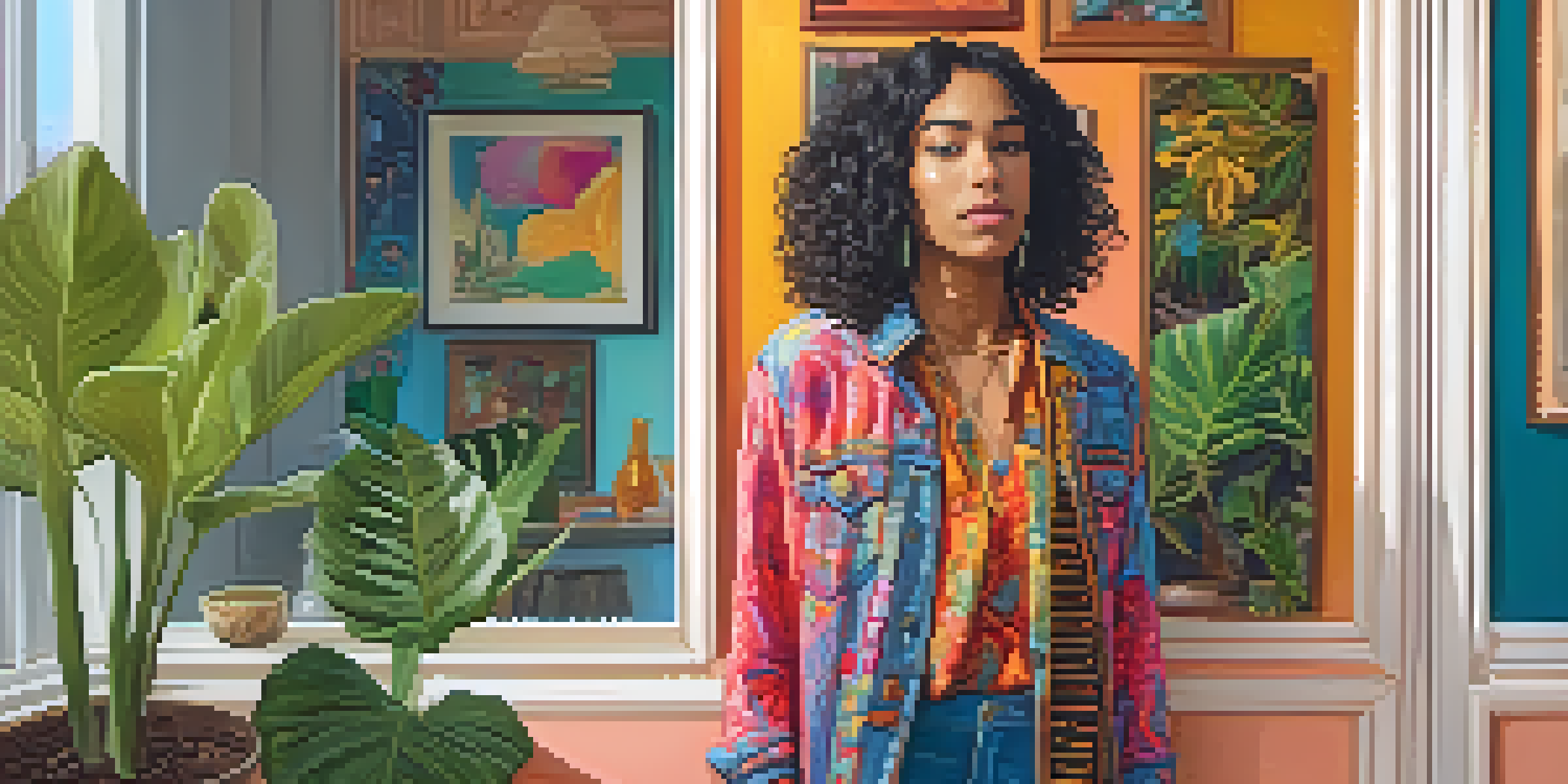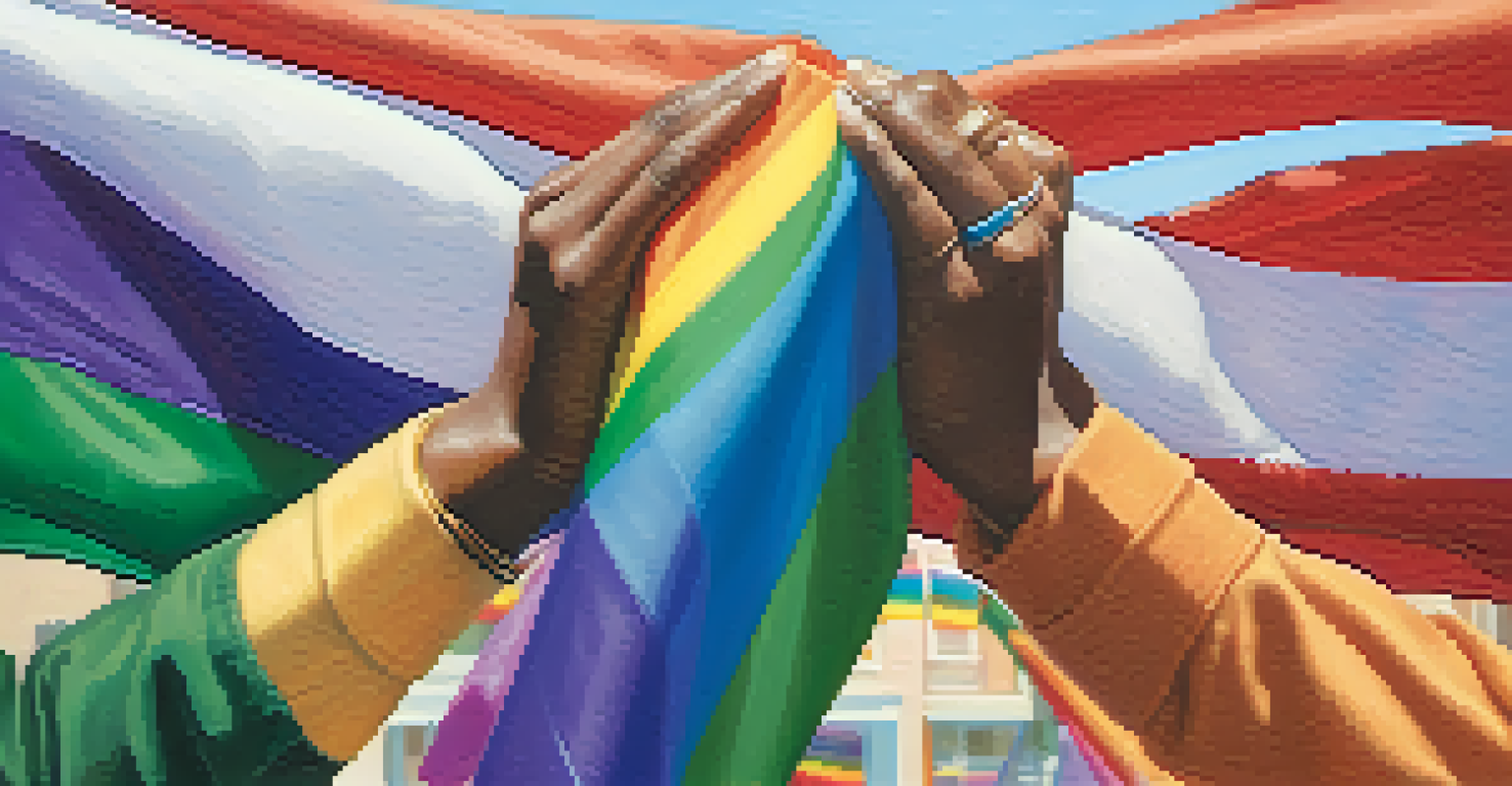The Role of Photography in Documenting Gender Identity

Understanding Gender Identity Through the Lens
Photography serves as a powerful medium for expressing and exploring gender identity. It allows individuals to visually communicate their experiences and feelings about their gender, often transcending the limitations of words. Through imagery, diverse narratives emerge, showcasing the complexity and fluidity of gender.
Photography is a way of feeling, of touching, of loving. What you have caught on film is captured forever... It remembers little things, long after you have forgotten everything.
When we look at a photograph, we’re not just seeing a moment captured in time; we’re witnessing a person’s story. For many, this can be a critical outlet for self-expression, especially for those whose identities may not align with traditional norms. This visual representation can foster understanding and empathy, inviting viewers into the subject's world.
Ultimately, photography acts as both a mirror and a window—reflecting personal truths while also offering insights into the broader societal perspectives on gender. This dual role is essential in a world that often struggles to embrace the nuances of individual identity.
The Historical Context of Gender Representation in Photography
Photography has a rich history of shaping societal views on gender. From early portraiture to modern digital media, images have influenced how gender roles are perceived and represented. In many ways, photography has both challenged and reinforced stereotypes throughout its evolution.

Historically, women and marginalized genders were often objectified or excluded from narratives that defined gender. As photography became more accessible, it opened new avenues for these groups to reclaim their narratives and assert their identities. This shift allowed for a broader range of representations, moving beyond traditional portrayals.
Photography Amplifies Gender Stories
Photography serves as a powerful medium, allowing individuals to visually express and explore their gender identities.
Today, this historical context helps us understand the power dynamics involved in visual storytelling. By recognizing past misrepresentations, contemporary photographers can create more authentic and inclusive images that honor the diverse spectrum of gender identities.
The Role of Self-Portraiture in Gender Exploration
Self-portraiture has emerged as a vital tool in exploring and affirming one’s gender identity. For many, capturing oneself on camera can be a deeply personal act, allowing for experimentation with different looks, expressions, and identities. This process can facilitate self-discovery and validation.
You don't make a photograph just with a camera. You bring to the act of photography all the pictures you have seen, the books you have read, the music you have heard, and the people you have loved.
Through self-portraiture, individuals can challenge societal norms and expectations surrounding gender. By taking control of their image, they can present themselves as they feel most authentic, rather than how society might expect them to look. This empowerment is especially significant for those navigating non-binary or gender-fluid identities.
Moreover, self-portraiture can foster community and connection. Sharing these images on social media platforms or within art spaces can resonate with others who share similar experiences, creating a sense of belonging and solidarity in a world that often feels isolating.
The Impact of Social Media on Gender Identity Representation
The advent of social media has revolutionized how gender identity is expressed and documented. Platforms like Instagram and TikTok enable individuals to share their stories through visuals, reaching a global audience and fostering dialogue around gender. This democratization of representation allows for a multitude of voices to be heard.
Visual storytelling on social media has also led to the rise of influential figures who challenge mainstream gender norms. By curating their images and narratives, these individuals can inspire others to embrace their identities and advocate for change. This visibility is crucial in promoting acceptance and understanding.
Social Media Redefines Gender Expression
Platforms like Instagram and TikTok enable diverse voices to share their gender identities, fostering global dialogue and visibility.
However, this new landscape also presents challenges, such as the pressure to conform to certain aesthetic standards. It's important to navigate this space mindfully, ensuring that the representation remains authentic and diverse, reflecting the true spectrum of gender identities.
Photography as a Tool for Activism and Advocacy
Photography has long been a powerful tool for activism, particularly in the realm of gender rights. Through compelling visuals, photographers can highlight issues related to gender inequality, discrimination, and violence, creating a call to action. These images evoke emotion, sparking conversations that can lead to societal change.
Activist photographers often collaborate with marginalized communities to document their struggles and triumphs. By amplifying these voices, they contribute to a more nuanced understanding of gender issues, fostering empathy and support. This collaborative approach ensures that the narratives presented are authentic and representative.
Moreover, the impact of advocacy photography extends beyond immediate awareness; it can influence policy changes and inspire movements. When powerful images are shared widely, they have the potential to mobilize communities and ignite passion for gender equality and justice.
Challenges in Documenting Gender Identity Through Photography
While photography can be an empowering medium for documenting gender identity, it is not without its challenges. One significant issue is the risk of misrepresentation, where a photographer’s interpretation may not align with the subject’s identity. This can lead to the perpetuation of stereotypes rather than the intended expression of individuality.
Additionally, issues of consent and privacy are critical in this context. It’s essential for photographers to navigate these spaces with sensitivity, ensuring that individuals feel comfortable and respected in their representation. Open communication about how images will be used is vital in building trust.
Activism Through Visual Storytelling
Photography plays a crucial role in activism by highlighting gender issues and amplifying marginalized voices for societal change.
Finally, the commercialization of gender identity in photography can dilute authentic representations. As images are commodified for profit, there’s a risk that the true essence of individual experiences may be lost. It’s crucial for both photographers and viewers to remain mindful of these dynamics to preserve the integrity of the narratives being shared.
The Future of Photography in Gender Identity Documentation
As technology continues to evolve, so does the landscape of photography and its role in documenting gender identity. With advancements in digital media and virtual reality, new possibilities emerge for immersive storytelling. These innovations can create richer, more inclusive experiences that engage audiences in profound ways.
The future will likely see a greater emphasis on intersectionality within photography. By highlighting the interconnectedness of various identities—such as race, class, and sexuality—photographers can create a more comprehensive understanding of the gender experience. This holistic approach will help dismantle single narratives that often dominate discussions around gender.

Ultimately, the ongoing dialogue about gender identity and representation will shape the trajectory of photography. As more individuals share their stories and challenge conventions, the medium will continue to evolve as a vital tool for personal expression and social change.